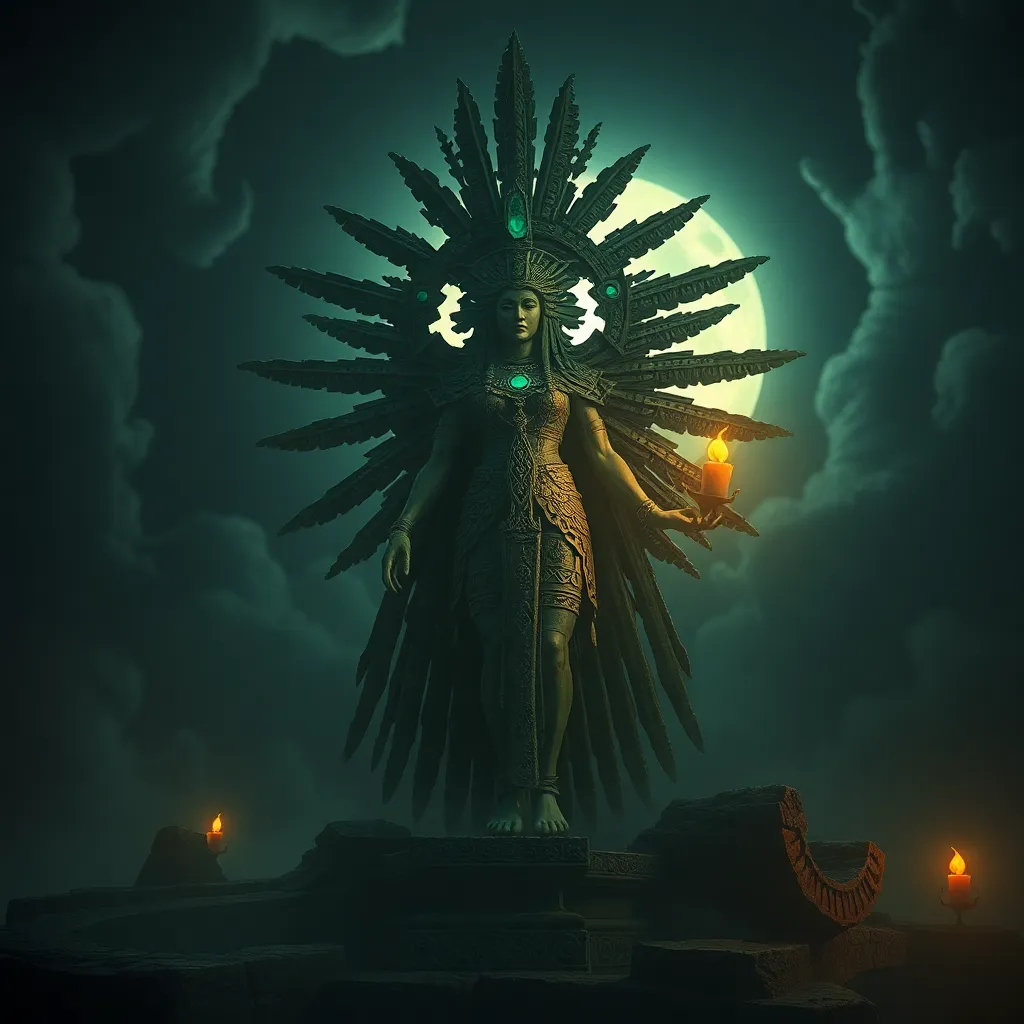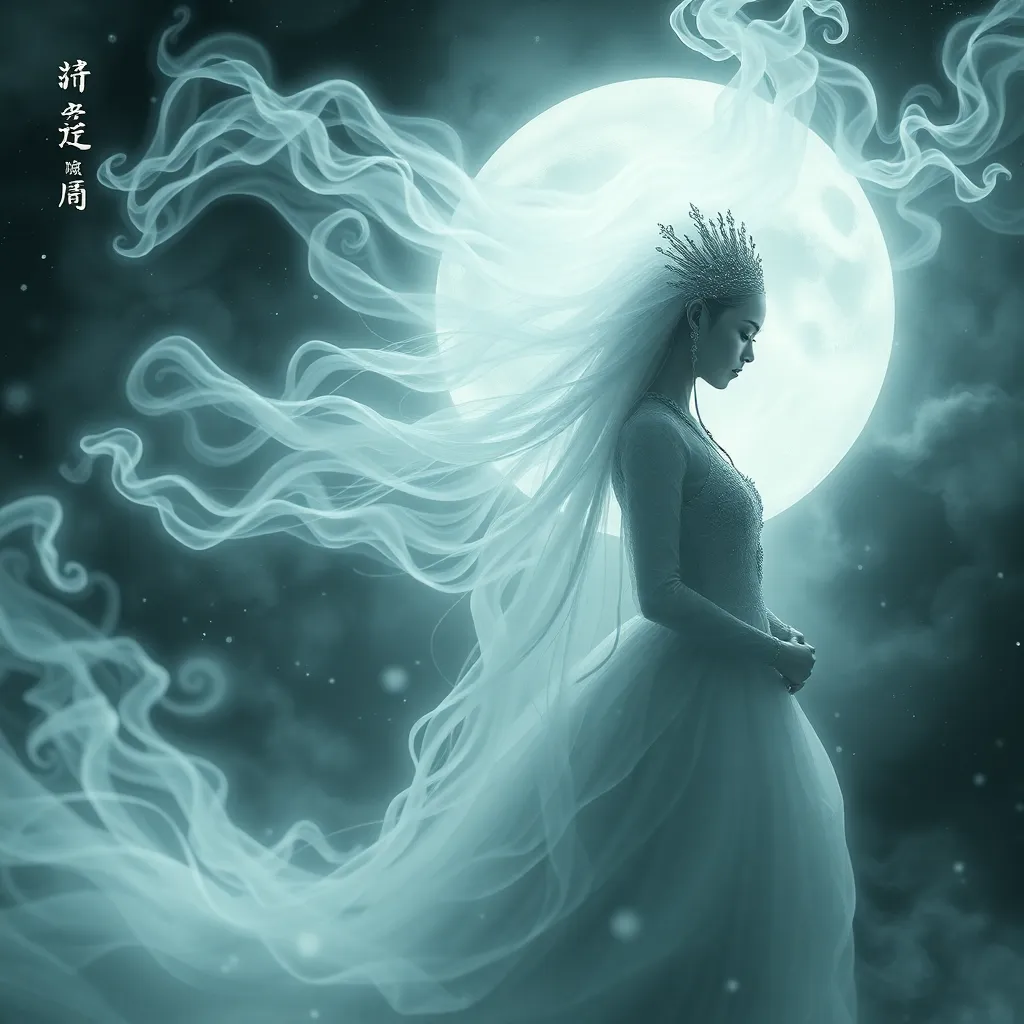Camazotz and the Underworld: Diving into the Nahua Myths of Death and Transformation
I. Introduction
Nahua mythology is a rich tapestry of beliefs and narratives woven into the cultural identity of the Nahua people, who inhabit regions of modern-day Mexico. This mythology encompasses a wide range of themes, including creation, warfare, and the afterlife, reflecting the values and experiences of the Nahua civilization. Among the pantheon of Nahua deities, Camazotz stands out as a significant figure associated with death and transformation.
Camazotz, often depicted as a bat-like creature, embodies the duality of life and death, serving as both a harbinger of mortality and a symbol of rebirth. The purpose of this article is to explore the mythological context of Camazotz, his role in the Nahua underworld, and the broader implications of his narrative within both ancient and contemporary frameworks.
II. The Mythological Context of Camazotz
A. Historical background of the Nahua civilization
The Nahua civilization flourished in Mesoamerica, particularly in areas that are now Mexico, from as early as 1400 BCE. The Nahua people developed complex social structures, advanced agricultural practices, and profound spiritual beliefs. Their mythology was deeply intertwined with their understanding of the cosmos, nature, and the cyclical nature of life and death.
B. Camazotz in the pantheon of Nahua deities
Within the Nahua pantheon, Camazotz is recognized as a deity associated with the night, death, and the underworld. His name translates to “bat” in the Nahuatl language, reflecting his nocturnal nature. Camazotz is often depicted as a creature with a human body and bat-like features, symbolizing his connection to both the earthly realm and the supernatural.
C. Symbolism and attributes associated with Camazotz
- Death: Camazotz is primarily viewed as a symbol of death, often depicted as the one who guides souls to the underworld.
- Transformation: His association with bats, creatures that undergo a significant metamorphosis, emphasizes themes of transformation and rebirth.
- Nocturnal Guardian: He is considered a guardian of the night, representing the mysteries that lie beyond the veil of death.
III. The Underworld in Nahua Beliefs
A. Description of Mictlan, the Nahua underworld
Mictlan is the Nahua underworld, a complex realm where souls journey after death. It is not a place of punishment but rather a necessary passage for the deceased on their way to the afterlife. Mictlan is often depicted as having nine distinct levels, each presenting its own challenges that the soul must overcome.
B. Role of death and the afterlife in Nahua culture
Death in Nahua culture was not seen as an end but rather a transformation into another state of existence. The afterlife was viewed as a continuation of life, with the soul undergoing various experiences and challenges. Rituals and ceremonies were performed to honor the dead and ensure safe passage to Mictlan.
C. The journey of the soul through the underworld
The journey to Mictlan involved navigating through the levels of the underworld, facing trials that tested the soul’s worthiness. This journey could take several years, and the guidance of deities like Camazotz was believed to be crucial in aiding the souls through these challenges.
IV. Camazotz’s Role in Death and Transformation
A. Camazotz as a harbinger of death
As a harbinger of death, Camazotz plays a pivotal role in the myths surrounding mortality. His presence is often associated with omens of death, and he is believed to be the one who collects souls as they leave the earthly realm.
B. Myths illustrating Camazotz’s influence on transformation
Various myths depict Camazotz’s influence on transformation, showcasing how he helps souls navigate their journey to Mictlan. One such myth tells of a hero who encounters Camazotz during his quest, ultimately leading to a profound transformation and understanding of life and death.
C. Connections to themes of rebirth and regeneration
Camazotz’s association with bats also ties him to themes of rebirth and regeneration. Bats are creatures that symbolize renewal due to their ability to emerge from darkness and take flight. This duality of death and rebirth reflects the cyclical nature of life, a key theme in Nahua mythology.
V. Comparative Analysis with Other Cultures
A. Similarities and differences with other Mesoamerican deities
In comparison to other Mesoamerican deities, such as Tezcatlipoca and Quetzalcoatl, Camazotz shares aspects of duality and transformation. However, while Tezcatlipoca is often associated with chaos and conflict, Camazotz embodies a more direct connection to death and the afterlife.
B. Comparative figures in global mythology (e.g., Hades, Anubis)
Globally, Camazotz can be compared to figures like Hades from Greek mythology and Anubis from Egyptian mythology. All three figures serve as guides for souls in the afterlife, but their cultural contexts shape their attributes and roles significantly.
C. Insights gained from cross-cultural analysis
Cross-cultural analysis reveals common themes in the understanding of death and the afterlife. It highlights how different societies conceptualize transformation and the role of deities in guiding souls, showcasing both unique and shared human experiences.
VI. Artistic Representations of Camazotz
A. Overview of Camazotz in Nahua art and artifacts
Camazotz has been depicted in various Nahua art forms, including codices, pottery, and sculptures. These artistic representations often emphasize his bat-like features and his association with the underworld.
B. Interpretation of visual symbolism and themes
The visual symbolism associated with Camazotz often includes elements of darkness, transformation, and the cyclical nature of life. Artists utilized contrasting colors and forms to convey his dual nature as both a bringer of death and a symbol of rebirth.
C. The impact of Camazotz on modern artistic expressions
In contemporary art, Camazotz continues to inspire artists exploring themes of death, transformation, and cultural identity. His representation serves as a bridge connecting ancient beliefs with modern interpretations, reflecting the ongoing relevance of Nahua mythology.
VII. Contemporary Relevance of Camazotz and Nahua Myths
A. Influence on modern interpretations of death and transformation
Camazotz’s narrative influences modern interpretations of death, with many finding meaning in the balance between life and death. His story encourages a deeper understanding of the cyclical nature of existence.
B. The resurgence of interest in indigenous mythology
As contemporary society increasingly seeks to reconnect with indigenous narratives, figures like Camazotz gain prominence. This resurgence reflects a broader acknowledgment of the wisdom embedded in these ancient stories.
C. Lessons from Camazotz for contemporary society
Camazotz teaches valuable lessons about embracing change and understanding the inevitability of death as part of life. His symbolism encourages reflection on transformation and the interconnectedness of all living things.
VIII. Conclusion
In summary, Camazotz serves as a compelling figure within Nahua mythology, embodying themes of death, transformation, and rebirth. His role in the mythological context highlights the importance of understanding the underworld and the journey of the soul in Nahua culture. The enduring legacy of Nahua myths, including the stories of Camazotz, invites further exploration and appreciation of indigenous narratives that continue to resonate in contemporary society.
Encouraging further exploration of these rich myths not only honors the cultural heritage of the Nahua people but also enriches our understanding of the human experience across time and space.



